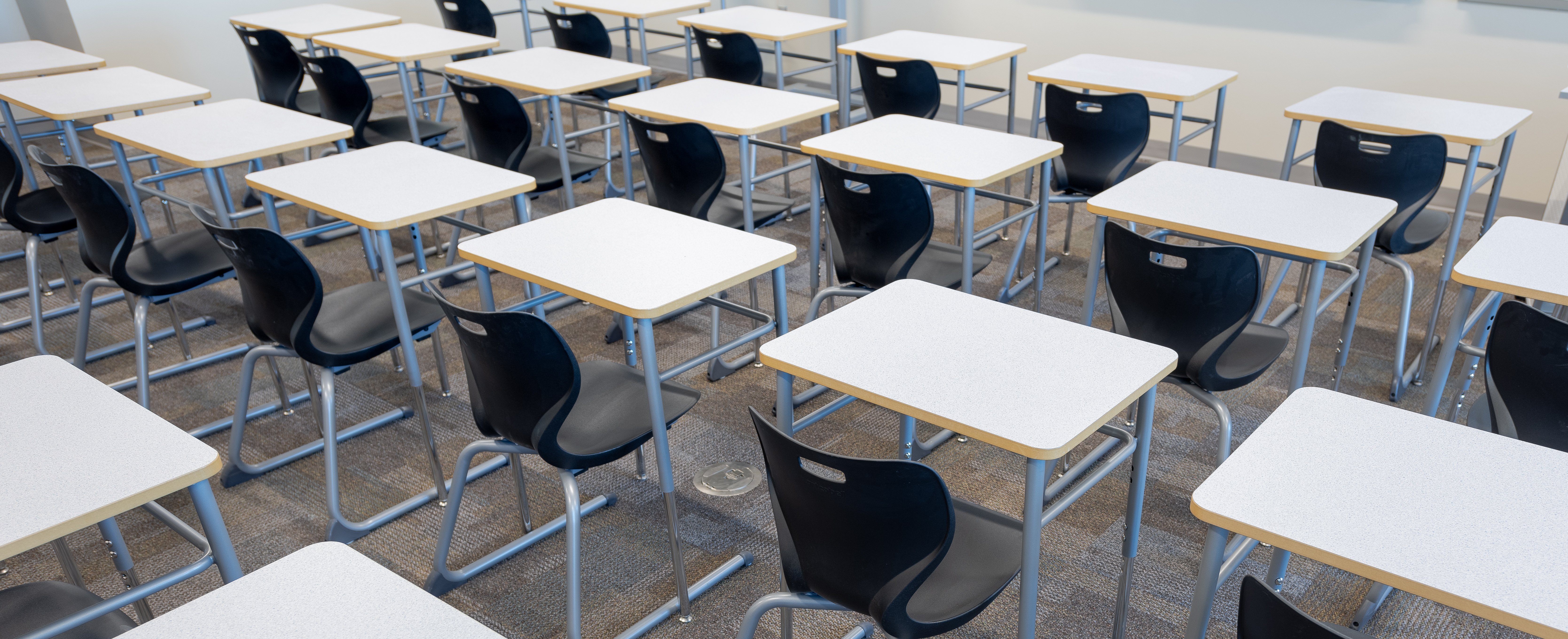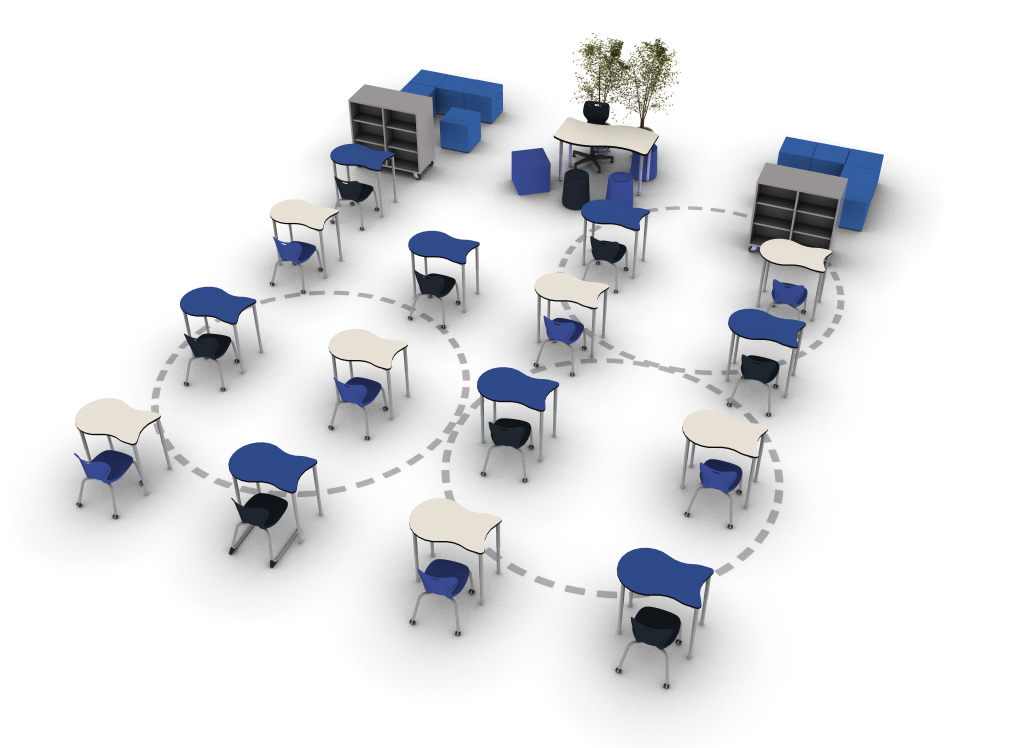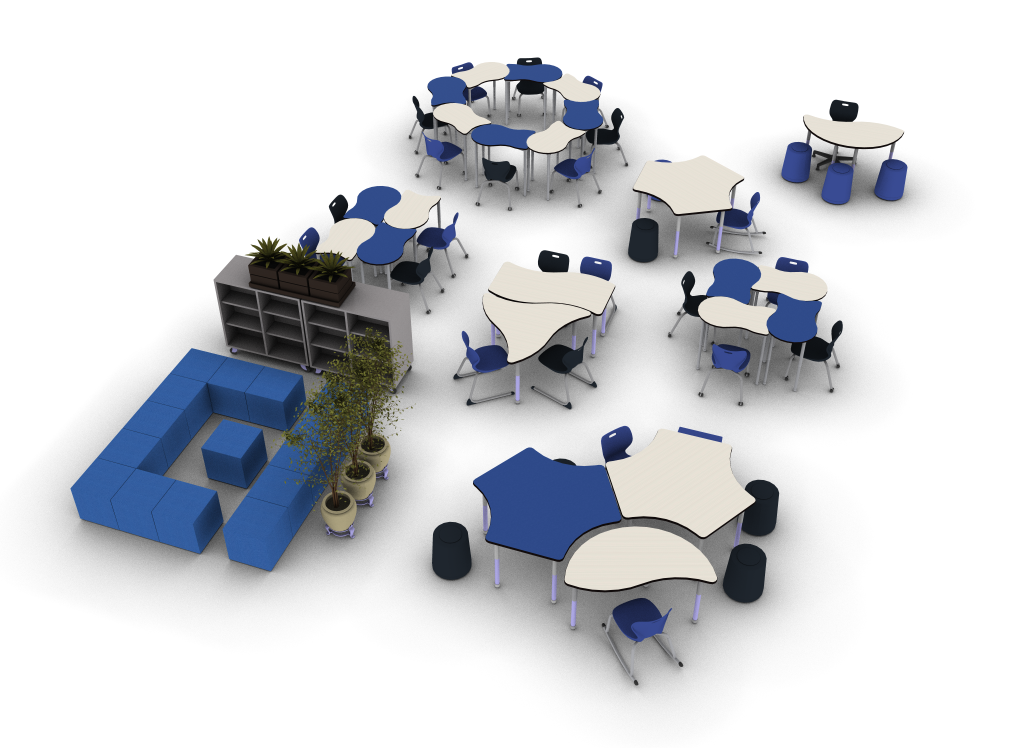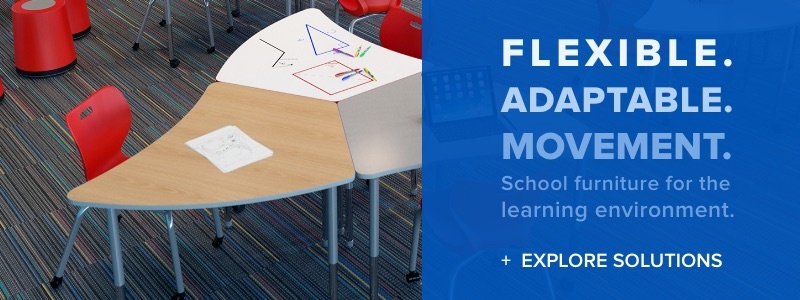Educational leaders across the globe are formulating plans for students, staff, and families to learn safely under circumstances they’ve never faced before. Uncertain of how exactly to orchestrate these plans, school leaders are working tirelessly to design and set up learning environments to best protect students and teachers while still making instruction effective.
How Traditional Classroom Layouts Impact Modern Learning Environments
With the onset of the COVID-19 pandemic, students and teachers everywhere suddenly found themselves navigating a new world. As schools continue to bring their students back to campus for in-person learning, they’re experiencing ever-changing guidelines with limited instruction. Under fire to balance safety with effective teaching, school administrators and teachers have been and continue to be incredibly resourceful, resilient, and creative to provide physically-distant classroom setups without compromising pedagogy.
Working in crisis mode, educators are looking for the easiest and most cost-effective solutions for how to accomplish this. One option being considered is resorting back to legacy furniture, where individual student desks are set up in rows with book boxes to store student supplies. While this reversion to yesteryear’s classroom layout seems like the best solution, how can we use this opportunity to be forward-thinkers and plan, not only for today, but develop a vision for teaching and learning in a post-pandemic future?

Using COVID-19 as an Opportunity to Rethink Your School’s Classroom Setup
The educational system has been under review for a while. Our eyes were opened in 1983 with the release of the report, A Nation at Risk[1]. Since then, field practitioners have found (and continue to find) that today’s classrooms need to change. Most concerning are the negative impacts of:
- passive learning
- student disengagement
- management of technology
- one-size-fits-all instructions
- rigid and inflexible classroom furnishings
Then in the Spring of 2020, as COVID-19 began forcing schools to close, it brought to our attention the need for new solutions. While many professionals used this as an opportunity to reset, rethink, and reimagine the classroom experience altogether, they were hindered. They were left with the question, “How do you plan for today’s learning demands but prepare for tomorrow’s learning environment?
Plan For Today’s Learning Environment Without Neglecting the Needs of Tomorrow’s Schools
As we set up classrooms for this year’s school requirements — six feet of social distance between students, smaller class sizes, hybrid schedules, and technology-infused lessons — we must continue to focus on how we want students to...
- Collaborate with their peers and teachers.
- Actively participate in the content.
- Experience personalized lessons.
- Have the flexibility they need to learn anywhere and at any time.
Planning for today:
Preparing for tomorrow:
As you make important classroom setup decisions, consider these two questions:
- Is it the right time to start to transform classrooms that are adaptable to the teachers’ and students’ needs?
- How can we embrace and start to unpack our vision for the future of classrooms, while still mindful of today’s demands?
School Furniture to Help You Navigate The Coronavirus pandemic
Over the next few blogs, I’ll share with you ideas for designing a next-gen learning environment to support your students and teachers with these questions in mind. As a former teacher and school administrator, I know how important school furniture is for the success of students, which is why I’m passionate about helping school leaders navigate these challenging times. If you’re interested in learning more about how Artcobell’s school furniture can help you create the ideal learning environment for today’s pandemic-purposed classroom without neglecting the needs of tomorrow’s students, I can help! Email me and we can get a risk-free conversation scheduled.
A Nation at Risk: The Imperative for Educational Reform A Report to the Nation and the Secretary of Education United States Department of Education by The National Commission on Excellence in Education. 1983.
